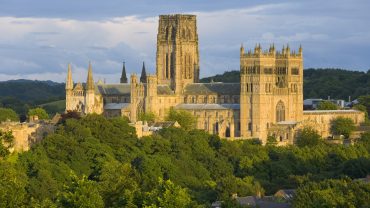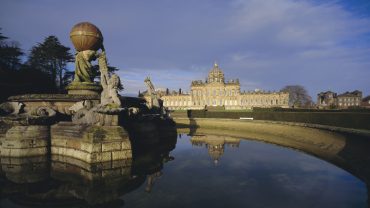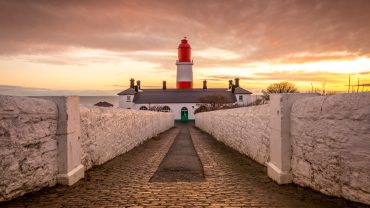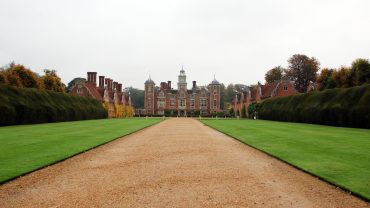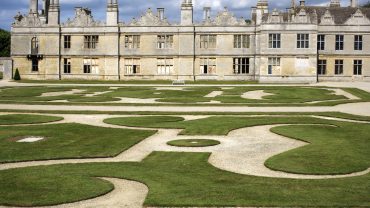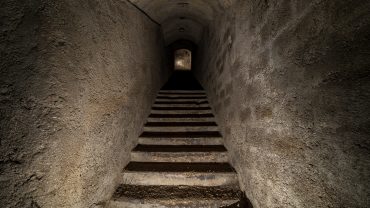Rolling hills, cob nut fields and blossoming orchards – Kent didn’t get its nickname as the ‘Garden of England’ for nothing. But beyond the picture-perfect countryside of the High Weald National Landscape, the stunning villages of Sissinghurst, Chiddingstone and Chilham, and the seaside charm of Whitstable, Broadstairs and Deal, this corner of the South East boasts something even more impressive – a glittering line-up of historic homes and castles. They’re not just some of the best stately homes to visit in Kent, they’re some of the most impressive in the whole country.
From royal fortresses defending the coast to lavish country estates built by ambitious Tudor courtiers and Georgian aristocrats, Kent’s strategically important location close to London one way and mainland Europe the other, made it the perfect setting for power, politics, and pageantry.
Today, the county is a treasure trove of fairytale moats, stately facades and manicured gardens which tell stories of kings, queens, writers and leaders. Let’s explore the very best stately homes in Kent.
Scotney Castle, Lamberhurst
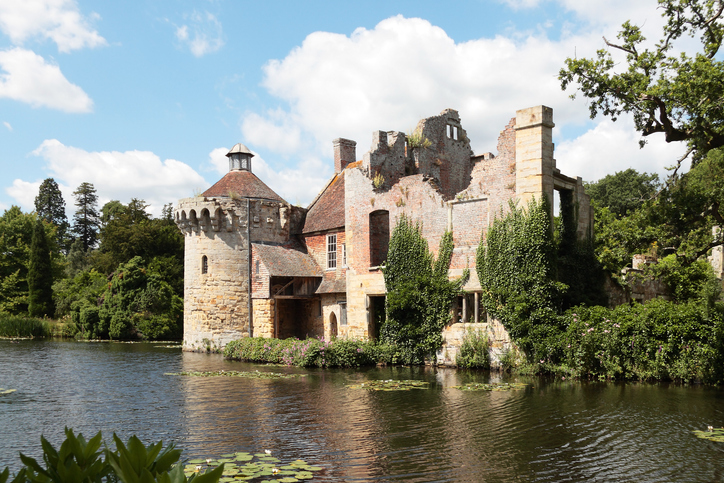
Scotney Old Castle, originally designed to protect against French invasion (Credit: TerryJLawrence via Getty Images)
Scotney Castle is a picturesque estate near Lamberhurst, famous for its romantic ruined medieval castle and charming Victorian country house. The story begins in 1378 when Roger Ashburnham built the original fortified manor house with towers at each corner, designed to protect against French invasions. Over time, much of the medieval castle fell into ruin, beautifully framed by what became a stunning landscaped garden created by the Hussey family, who bought the estate in 1778 from the Darrell family who had owned Scotney for over 300 years. Edward Hussey III, in the 1830s, built the ‘new’ Scotney Castle and turned the old castle into a designed ruin, a feature that remains the heart of the estate today, and one of the reasons it has become one of the best historic houses to visit in Kent.
The Husseys lived at Scotney for nearly two centuries, collecting thousands of fascinating objects – including a 100-million year old impression of a dinosaur’s footprint – and developing the gardens into an English Picturesque masterpiece. The last owner, Christopher Hussey, a noted architectural historian, left the estate to the National Trust in 1970. It was home to his widow, Betty, until 2006, when the house opened to the public.
Ightham Mote, Sevenoaks
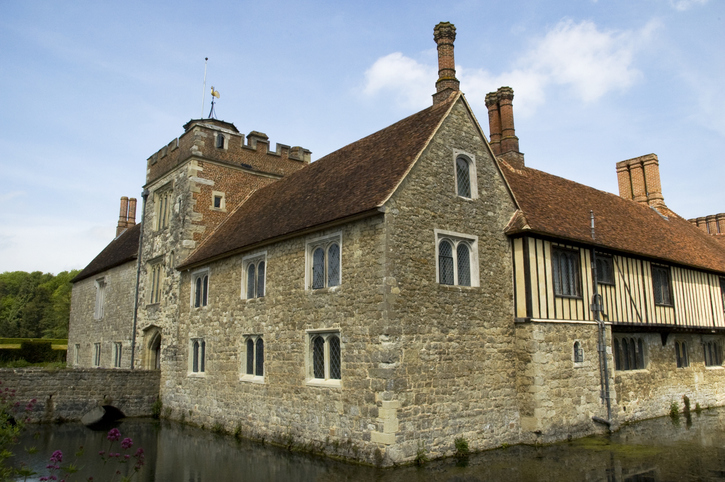
Ightham Mote dates back over 700 years (Credit: asmithers via Getty Images)
Constructed from Kentish ragstone and great Wealden oak, Ightham Mote is one of the most famous historic houses in Kent. It was built in the early 1320s and the first owner was Sir Thomas Cawne, a knight and military captain, in the 1360s. It was designed both as a grand home and a safe haven, with its square moat (crossed by three bridges which visitors can still walk over today) signifying the status of the owner as well as, more practically, offering protection from unwelcome guests and wild animals.
It was described by architectural writer John Newman as ‘the most complete small medieval manor house in the county’ and over its 700-year history, Ightham Mote’s walls have witnessed a parade of colourful owners, including Tudor courtier Sir Richard Clement hoping to win favour with Henry VIII, and local high society families such as the Selbys, who owned it for almost 300 years. Today, after escaping demolition in the 1950s and receiving a multi-million pound National Trust restoration, Ightham Mote continues to be one of the most popular stately homes to visit in Kent. A particularly quirky claim to fame is that the house boasts the only Grade I listed Victorian dog kennel in England!
Leeds Castle, Maidstone
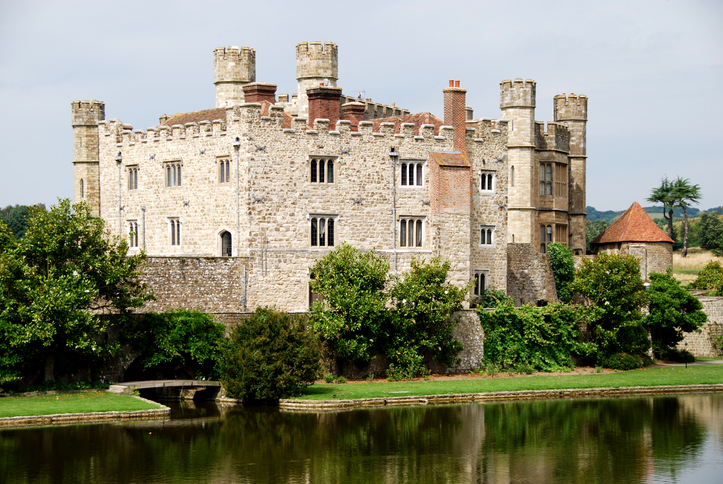
Leeds Castle, ‘the loveliest castle in the world’ (Credit: Jbroadwater via Getty Images)
Leeds Castle has been described as ‘the loveliest castle in the world’, and it’s easy to see why. It was built in 1119 by Norman lord Robert de Crevecoeur on the site of an existing wooden structure constructed in the ninth century by a local Saxon chieftain called Led or Leed on two islands on the River Len. Over the centuries it’s been a fortress, royal palace, Tudor playground and even a WWII hospital. The castle’s strategic location once guarded England’s southern approaches from invaders and crowned it as the ‘Castle of Queens,’ with a number of historical queens calling it home.
In the late thirteenth century, King Edward I and Queen Eleanor of Castille transformed Leeds into one of the most lavish stately homes in Kent, indeed in all of England, and in 1519, Henry VIII famously renovated it for his first wife, Catherine of Aragon. After centuries of adventures and owners, Leeds Castle was lovingly – and expensively – restored by Olive, Lady Baillie, who bought the castle in 1926 for £180,000. Home to what’s said to be the world’s largest dog collar museum, Leeds Castle is one of Kent’s most popular tourist sites.
Knole, Sevenoaks
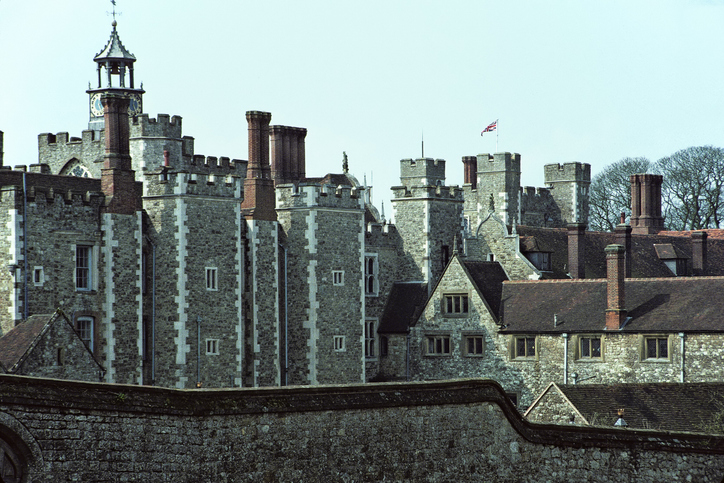
Knole, one of England's biggest houses (Credit: S. Greg Panosian via Getty Images)
Built in the fifteenth century for Archbishop of Canterbury Thomas Bourchier, the house – believed to be one of the five biggest houses in England – sits inside Kent’s last medieval deer park. One of the grandest historic houses in Kent, Knole has been owned by kings, dukes, earls and lords. In 1603, it was passed to the Sackville family who still live there today, although much of the house was gifted to the National Trust in 1946.
An often-repeated myth is that Knole is what’s known as a ‘calendar house’, with with 365 rooms, 52 staircases, 12 entrances, and seven courtyards, and while this might have been accurate when the main house was built, renovations and updates over the years means the definition is a little loose! One of the most impressive stately homes to visit in Kent, Knole also has a 26-acre walled garden and was the setting for the videos that accompanied the release of The Beatles’ singles Penny Lane, and Strawberry Fields Forever.
Penshurst Place, Tonbridge
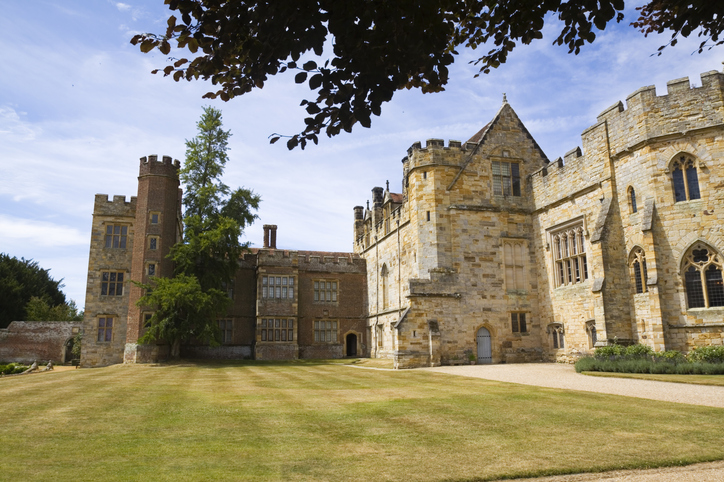
Penshurst Place, one of Britain’s best-preserved fortified manor houses (Credit: stocknshares via Getty Images)
Penshurst Place sits in the heart of the Kent countryside, between the market town of Tonbridge and the famous spa town of Royal Tunbridge Wells. First built in 1341 for London’s Lord Mayor Sir John de Pulteney as the ultimate medieval country retreat, Penshurst is one of Britain’s best-preserved fortified manor houses. Indeed it’s been described as ‘one of the most complete surviving examples of fourteenth century domestic architecture in England.’ Over the centuries, this grand estate has hosted royals, poets and politicians, and is even thought to have been used by King Henry VIII as a hunting lodge while he courted Anne Boleyn up the road at Hever Castle. It was said he granted Penshurst to Anne of Cleves as part of their divorce settlement.
One of the most fascinating historic houses to visit in Kent, Penshurst Place was granted to the Sidney family in 1552 by King Edward VI. The Sidneys expanded and restored Penshurst over the centuries, adding the impressive State Rooms, the King’s Tower, and one of England’s oldest private gardens. Many generations of Sidneys have lived here, including the celebrated Elizabethan poet Sir Philip Sidney, and in the early nineteenth century Sir John Shelley-Sidney, uncle of Percy Bysshe Shelley, the great Romantic poet. Today it remains one of the oldest family-owned estates in England.
Chartwell, Westerham
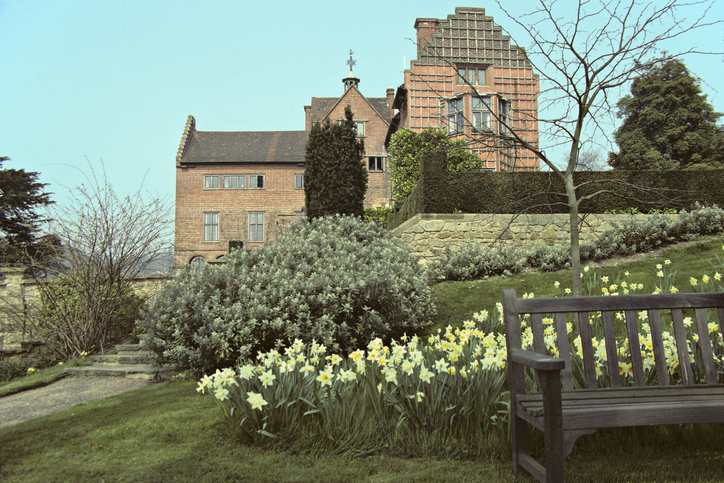
Chartwell, Winston Churchill's beloved home (Credit: S. Greg Panosian via Getty Images)
Chartwell is a charming country house near Westerham, best known as the home of Sir Winston Churchill and his beloved wife Clemmie for over forty years. One of the most historically significant stately homes in Kent, the estate’s history stretches back to the fourteenth century when it was called Well-street and owned by William-at-Well. The house as it stands today was largely rebuilt and extended in the 1920s after Churchill bought the property in 1922. Though it was originally a rather plain mansion (the oldest walls date from the 1600s), Churchill saw its potential immediately, enchanted by its stunning views over the Weald of Kent, which he famously called “the most beautiful and charming” he had ever seen.
During his time at Chartwell, Churchill wrote many of his famous speeches and books, entertained political allies, and even painted some of the landscapes himself. The house and gardens became his sanctuary, especially during the turbulent wartime years and after suffering a stroke. In 1946, friends helped purchase Chartwell and donate it to the National Trust on the condition that the Churchills could live there for life. Today, it remains one of the most deeply personal historic houses in Kent, with rooms, artwork, and gardens preserved almost exactly as Churchill left them, offering a fascinating glimpse into the private world of one of Britain’s greatest leaders.
Hever Castle, Hever
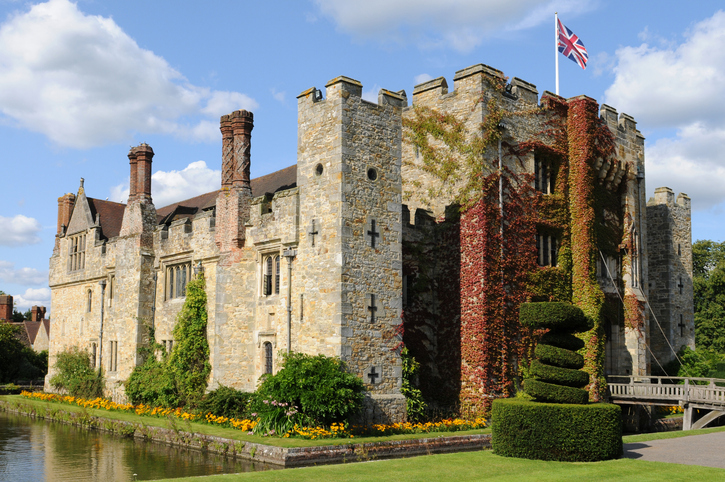
Hever Castle was once owned by King Henry VIII (Credit: grahamheywood via Getty Images)
Hever Castle is one of the most iconic stately homes in Kent. Nestled in the village of Hever near Edenbridge, about thirty miles southeast of London, it was originally built in 1270 and became famous as the childhood home of Anne Boleyn, Henry VIII’s second wife. The castle was owned by the Boleyn family from 1462 until 1539 when it became Crown property, and subsequently bought by Henry VIII in December 1540. It was later owned by Anne of Cleves, Henry’s fourth wife. The castle combines sturdy medieval fortifications with Tudor-era additions, creating a charming historic mix surrounded by a picturesque moat.
After passing through various families over the centuries, including the Waldegraves, the Humfreys, and the Meade-Waldos, Hever Castle fell into disrepair until American millionaire William Waldorf Astor bought it in 1903. Astor undertook extensive restorations, transforming the castle into a luxurious family home with beautiful Italian gardens, a lake, and a Tudor-style village for guests. Today, Hever Castle remains a major tourist attraction and one of the most popular stately homes to visit in Kent, featuring original Tudor furnishings, Anne Boleyn’s books, mazes, and regular events celebrating its rich history.


